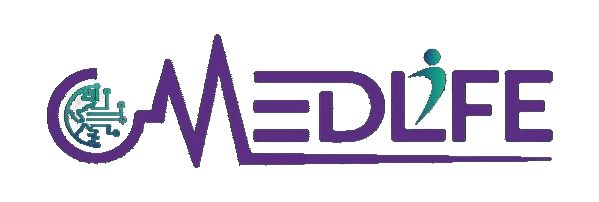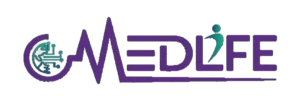In today’s complex healthcare landscape, clear and concise patient statements are critical to the success of revenue cycle management (RCM). Patient statements serve as a direct link between healthcare providers and patients, influencing timely payments, patient satisfaction, and overall financial health. When designed and managed effectively, they not only streamline the billing process but also foster trust between providers and patients. This comprehensive guide explores the vital role of patient statements in RCM, their key components, common challenges, and actionable strategies to optimize their effectiveness.
Understanding Patient Statements in Revenue Cycle Management
Patient statements are more than mere billing documents; they are essential tools for communication between healthcare providers and patients. These statements outline the financial responsibilities of patients, including charges for services rendered, insurance adjustments, and outstanding balances.
Why Are Patient Statements Important?
- Clarify Financial Responsibility: Patient statements detail the amounts owed by patients after insurance adjustments, ensuring transparency.
- Drive Timely Payments: Clear and professional statements reduce confusion and improve on-time payments.
- Minimize Administrative Burden: Accurate and accessible statements reduce billing inquiries and disputes, allowing administrative staff to focus on other tasks.
- Strengthen Patient-Provider Relationships: Transparent billing fosters trust and confidence in healthcare providers.
- Reduce Bad Debt: Consistent communication through statements minimizes unpaid balances and the need for collections.
Key Components of Effective Patient Statements
An effective patient statement should include the following:
- Patient Information
- Full name, address, and contact details.
- Account number and date of service for easy identification.
- Insurance Details
- Insurance provider’s name, policy number, and any adjustments made.
- Itemized Services
- Clear descriptions of services provided, along with dates and providers involved.
- Charges and Adjustments
- Breakdown of total charges, insurance payments, and the patient’s financial responsibility.
- Payment Information
- Accepted payment methods (credit card, online portal, check) and payment deadlines.
- Contact Information
- Details for billing support to address patient inquiries or disputes.
Challenges in Managing Patient Statements
Despite their importance, generating and managing patient statements often comes with challenges:
- Confusing Language
- Use of medical jargon and unclear itemizations can confuse patients and delay payments.
- Inaccurate Billing
- Errors in coding or insurance adjustments can lead to disputes and frustration.
- Delivery Delays
- Manual processes or reliance on traditional mail can slow down statement delivery.
- Limited Payment Options
- Failing to provide digital or online payment options can hinder prompt payments.
- Administrative Overload
- Small practices may struggle to manage statement generation due to limited staff and resources.
Optimizing Patient Statements for Improved RCM
1. Streamline Design
- Use clear, concise language to eliminate confusion.
- Highlight payment due dates and options with bold or colorful text.
- Include your practice’s branding for professional consistency.
2. Embrace Digital Solutions
- Offer electronic statements via email or patient portals.
- Implement QR codes on paper statements for quick access to online payment portals.
- Automate reminders to encourage on-time payments.
3. Provide Multiple Payment Options
- Enable secure online payments through patient portals.
- Offer traditional methods like mail-in checks while encouraging digital transactions for convenience.
4. Outsource Statement Generation
- Partner with specialized providers to ensure accurate and timely statement delivery.
- Outsourcing can reduce administrative workload and improve statement quality.
5. Educate Patients
- Include explanations of charges and payment plans in the statement.
- Provide resources or links to educational content on understanding medical bills.
- Train billing staff to handle patient inquiries efficiently.
Leveraging Technology for Patient Statements
Modern technology plays a pivotal role in optimizing patient statements and improving RCM:
- Electronic Health Records (EHR) Integration
- Synchronize patient information with billing systems for seamless statement generation.
- Automation Tools
- Automate the scheduling and delivery of patient statements to ensure consistency.
- Analytics and Reporting
- Use analytics to track payment trends, identify bottlenecks, and refine statement processes.
- Secure Communication Platforms
- Leverage HIPAA-compliant tools to safeguard patient data during statement delivery.
Benefits of Optimized Patient Statements
- Faster Payments: Clear, concise statements encourage prompt payments, improving cash flow.
- Improved Patient Satisfaction: Transparent and accurate statements build trust and reduce frustration.
- Reduced Administrative Costs: Automation and outsourcing minimize manual work and errors.
- Enhanced Revenue Cycle Efficiency: Streamlined processes ensure that all charges are captured and billed accurately.
Conclusion
Patient statements are indispensable in ensuring the financial health of healthcare practices and the satisfaction of patients. By prioritizing clarity, leveraging technology, and embracing best practices, providers can enhance their RCM processes while fostering better relationships with their patients.
Take control of your revenue cycle management today! Let Medlife help you simplify patient statements, reduce administrative burden, and improve cash flow. Contact us now to learn how we can transform your billing process into a streamlined, patient-focused system!


